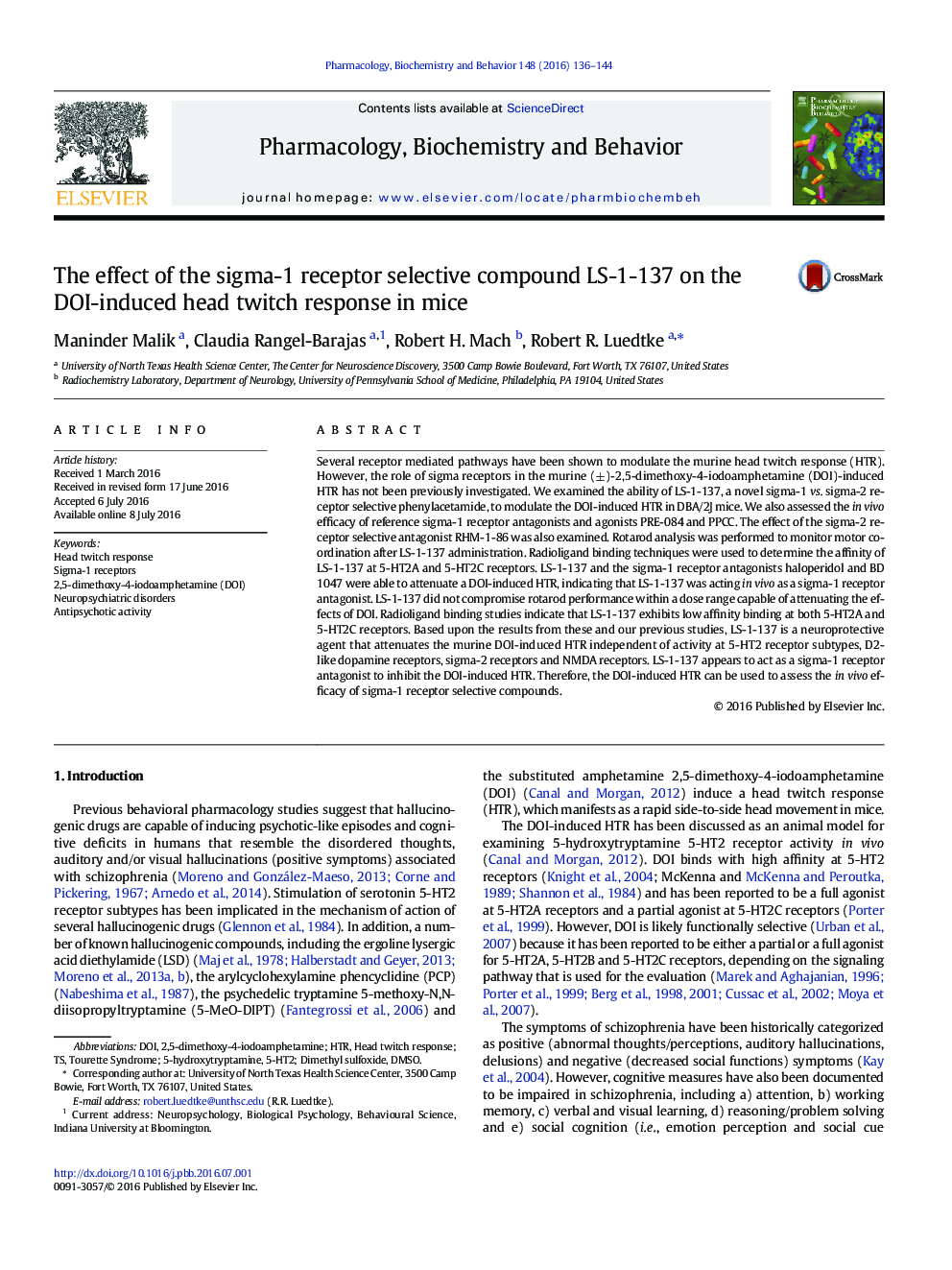| Article ID | Journal | Published Year | Pages | File Type |
|---|---|---|---|---|
| 2012660 | Pharmacology Biochemistry and Behavior | 2016 | 9 Pages |
•The sigma-1 receptor selective ligand LS-1-137 inhibits a murine head twitch response.•Reference sigma-1 receptor antagonists inhibit the head twitch response.•Reference sigma-1 receptor agonists do not inhibit the head twitch response.•LS-1-137 administration does not compromise rotarod performance.•LS-1-137 binds with low affinity at 5-HT2A and 5-HT2C receptors.
Several receptor mediated pathways have been shown to modulate the murine head twitch response (HTR). However, the role of sigma receptors in the murine (±)-2,5-dimethoxy-4-iodoamphetamine (DOI)-induced HTR has not been previously investigated. We examined the ability of LS-1-137, a novel sigma-1 vs. sigma-2 receptor selective phenylacetamide, to modulate the DOI-induced HTR in DBA/2J mice. We also assessed the in vivo efficacy of reference sigma-1 receptor antagonists and agonists PRE-084 and PPCC. The effect of the sigma-2 receptor selective antagonist RHM-1-86 was also examined. Rotarod analysis was performed to monitor motor coordination after LS-1-137 administration. Radioligand binding techniques were used to determine the affinity of LS-1-137 at 5-HT2A and 5-HT2C receptors. LS-1-137 and the sigma-1 receptor antagonists haloperidol and BD 1047 were able to attenuate a DOI-induced HTR, indicating that LS-1-137 was acting in vivo as a sigma-1 receptor antagonist. LS-1-137 did not compromise rotarod performance within a dose range capable of attenuating the effects of DOI. Radioligand binding studies indicate that LS-1-137 exhibits low affinity binding at both 5-HT2A and 5-HT2C receptors. Based upon the results from these and our previous studies, LS-1-137 is a neuroprotective agent that attenuates the murine DOI-induced HTR independent of activity at 5-HT2 receptor subtypes, D2-like dopamine receptors, sigma-2 receptors and NMDA receptors. LS-1-137 appears to act as a sigma-1 receptor antagonist to inhibit the DOI-induced HTR. Therefore, the DOI-induced HTR can be used to assess the in vivo efficacy of sigma-1 receptor selective compounds.
